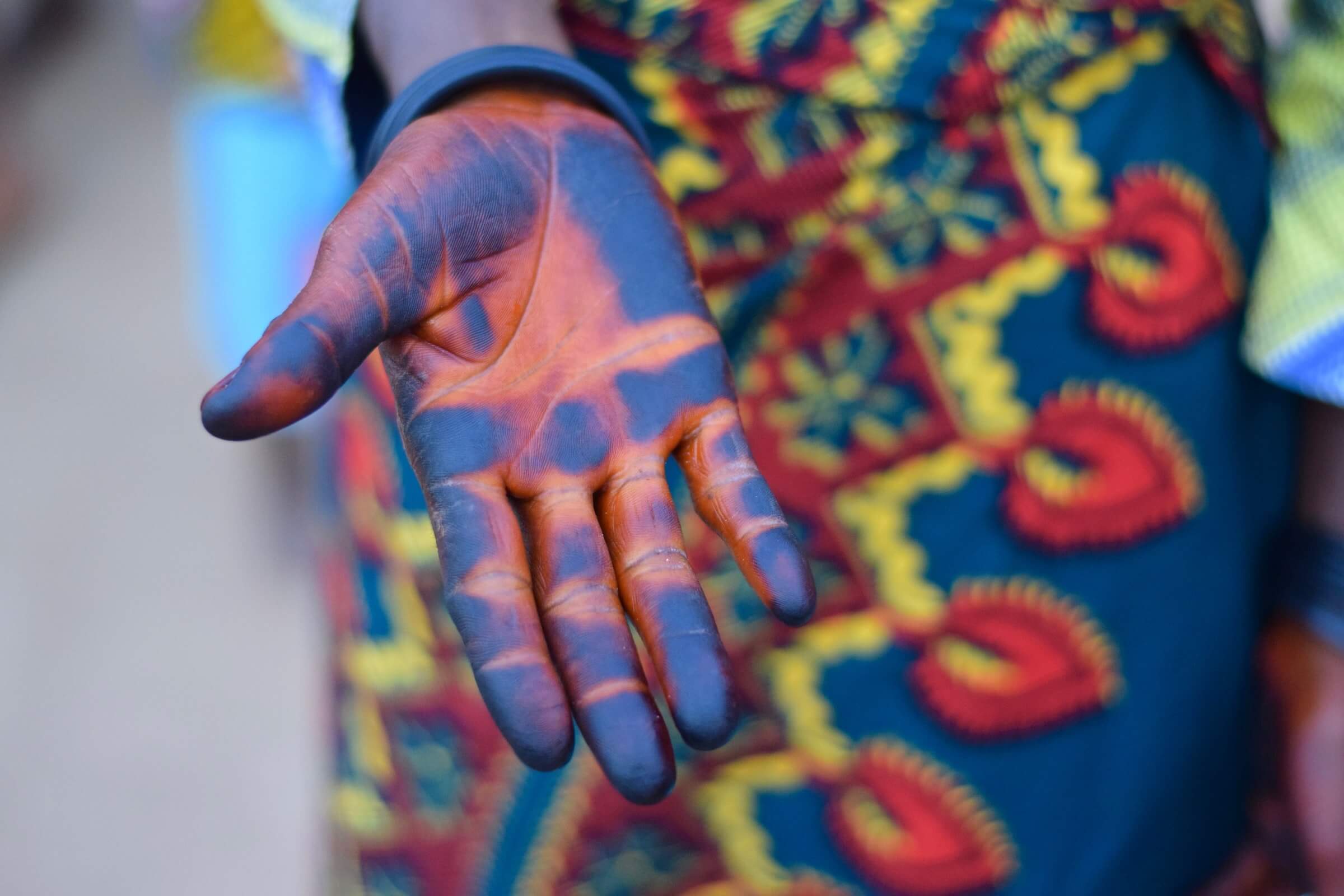On Humana Faith
Introduction
As described in provided histories for the founding of The Ikoku Charitable Trusts, The Ikoku Foundations, The Ikoku Philanthropies and The Ikoku Group, their Founder, Alvan Azinna Chibuzo Ikoku, came to understand the necessity of a meaningful moral and ethical basis for guiding and ensuring the spiritual and theological wholeness of human beings in contemporary society. Sancthumanism — the Humana faith, premised on the presumed sanctity of each human being as-is (mmaduism) — was thus defined and established by the Founder, to be administered as a spiritual faith and spiritual order, one distinct from other belief systems, faiths, religions, and spiritualities. To attain such a mission, Sancthumanism and Humana Sancta are to maintain the following commitments:
To Being Human and Humane
— to being human and humane, which entails, first and foremost, a most humble acceptance of the sacred existence of each human being as-is, that is, born of a common and sacred humanity, borne, too, with a presumed human sanctity, whose respect is to be reciprocated, continually and ethically.
— to being human and humane by providing for and protecting each human being’s ability to enjoy autonomy and community of, biological and psychological integrity of, confidentiality and privacy of, dignity and liberty of, and subsequent equanimity of the mind, soul and spirit.
— and to having mind, soul and spirit include facets of body, person and self attendant to each human being’s ability to carry out apperception and perception, cognition and thought, consciousness and conscience, consent and decision, education and understanding, private expression and speech, and reflection and spirituality.
To Mmaduism
— to have being human and humane also entail, given the above, a most humble non-rejection of the sacred existence of each human being as-is, that is, as born and always, even in death, mmadu and nwa mmadu, a human being and a human being’s, a person’s or someone’s child, whose fundamental humanity is seen and understood to be in human (or personed) relation-to-another, a relation known to be an indisputable truth of each life, a relation that every person recognizes as basic, common and essential to themselves as well as others, and so must not be denied, rather must be dignified and accorded commensurate respect, made manifest in human reciprocity and humane treatment.
To the Contemporary
— to have being human and humane also entail, given the above, our genuine endeavor to treat humans, including the self as well as others, with respect and reciprocity, as they are to coexist in two modes of the contemporary, first, as persons living among contemporaries, with a sense of what is in common or shared, and second, as persons having dissimilar as well as similar experiences of contemporary times, with significantly different though related histories, presents, and futures of being human and (not) being treated humanely.
To the Groundings
— to have being human and humane, given the above, also grounded in daily discipline and practice, study and work, inquiry and reflection, elucidation, epiphany and revelation.
To the Attainments
— to have being human and humane, given the above, also arise from insights attained as broadly, comparatively and dutifully as one possibly can, including in dialogue, via serial engagement in the arts; the humanities; the applied, formal and natural sciences; the fields of care and civics; and religious ecumenism, spirituality and theology.
To the Ethics
— to have being human and humane, given the above, also emanate from, rest on and result in good faith attention to and fulfillment of duties and obligations, principles, tenets and values of a humanely and morally informed ethics.
To the Offerings
— and to do the above continually, including via offerings that may serve as a means for guiding, practicing, studying, teaching and understanding that which elucidates and emanates from Sancthumanism
On Offerings
Introduction
The word offering is employed in Sancthumanism in a specific sense derived in part from its etymology — namely the bestowing, bringing or carrying before, the putting forward or presenting to a person or people that which forms the basis for practice, study, teaching, and thus further understanding, as it pertains to spirituality. Such meaning for offering — its specified importance and use in Sancthumanism — therefore entails the further commitments below:
To Elucidation
— to have the offerings of Sancthumanism elucidate that which serves as essential and as guidance for persons concerning the sanctity of human beings, as-is — including how to humbly accept, dignify, protect and respect such sanctity and what is basic and common to all peoples one may encounter, how to thus be human and humane more consistently and attend to the duties, obligations and practices of ethical co-existence between self and others.
To Elaboration
— to have the offerings of Sancthumanism further elaborate that which has been distilled as essential guidance — via analysis, contemplation, critique, deliberation, depiction, dialogue, examination, expression, inquiry and interpretation — toward a more capacious understanding of the basic scenes and substances of a life lived with a genuine belief in the innate sanctity of each human being as-is, worthy of being accepted as fully human and being treated in a fully humane manner.
To Equanimity
— to have the offerings of Sancthumanism centrally place equanimity as a condition for as well as a state of being human and humane — to teach, then, how essential are access to and enjoyment of a sanctuary — a protected and protecting place in geography and time, in the workings, too, of the body and mind, where one may apprehend, contemplate, develop and engage one’s capacity for contributing to ethical co-existence in contemporary societies, to a mode of living among others that is fundamentally human and humane.
Further
Therefore, a set of purposes for Sancthumanism entails making humanely, reasonably and respectfully accessible the following:
Sanctuaries | Humana
— Humana Sancta as formed and administered by the Founder, to serve as Sanctuaries of Sancthumanism, with a mission to provide spiritual sanctuary for advancing, practicing, studying, and teaching Sancthumanism as a distinct spiritual faith and spiritual order.*
Writings | Escrita
— Escrita Sancta as written and published by the Founder, to serve as a core liturgical and elaborative corpus for advancing, practicing, studying, teaching as well as further elucidating and understanding Sancthumanism as a distinct spiritual faith and spiritual order.*
Readings | Recita
— Recita Sancta as performed by the Founder and Fellows of Humana Sancta, to serve as liturgical and spiritual meetings and recitations for advancing, practicing as well as further elucidating and understanding Sancthumanism as a distinct spiritual faith and spiritual order.*
Teachings | Instructa
— Instructa Sancta as provided by the Founder and Fellows of Humana Sancta, to serve as education and instruction for studying, teaching as well as further elucidating and understanding Sancthumanism as a distinct spiritual faith and spiritual order.*
*Notes
— *for offerings: with copyright and attendant real and intellectual property rights owned solely by the Founder, Alvan Azinna Chibuzo Ikoku, and highly restricted, nonperpetual, display-only licenses and permissions to be granted solely by this Founder by separate and express written instrument signed and sealed.
On Escrita
Introduction
The Escrita Sancta (also The Books of Sancthụmanism and The Writings of Sancthụmanism) shall constitute an aesthetic, hermeneutic, liturgical and scriptural corpus for Sancthumanism, sections of which are to be displayed by the Founder, for perusal and practice, at Humana Sancta. See the sanctuary’s further Introduction to The Escrita, as well as more on individual works via the listing below:
I — Liturgies | Ala
The Guida
— the Guida of Sancthụmanism as written and published, in the scriptural guidance form and mode, by the Founder, Alvan Azinna Chibuzo Ikoku.*
The Hymna
— the Hymna of Sancthụmanism as written and published, in the scriptural lyric form and mode, by the Founder, Alvan Azinna Chibuzo Ikoku.*
The Recita
— the Recita of Sancthụmanism as written and published, in the scriptural recitation form and mode, by the Founder, Alvan Azinna Chibuzo Ikoku.*
II — Literatures | Lita
The Canta
— the Canta of Sancthụmanism as written and published, in the scriptural poetic form and mode, by the Founder, Alvan Azinna Chibuzo Ikoku.*
The Drama
— the Drama of Sancthụmanism as written and published, in the scriptural dramatic form and mode, by the Founder, Alvan Azinna Chibuzo Ikoku.*
The Fabula
— the Fabula of Sancthụmanism as written and published, in the scriptural fable and parable form and mode, by the Founder, Alvan Azinna Chibuzo Ikoku.*
The Romana
— the Romana of Sancthụmanism as written and published, in the scriptural narrative form and mode, by the Founder, Alvan Azinna Chibuzo Ikoku.*
III — Lucidities | Lucida
The Cara
— the Cara of Sancthụmanism as written and published, in the scriptural form and mode for elucidation as it pertains to care, by the Founder, Alvan Azinna Chibuzo Ikoku.*
The Communa
— the Communa of Sancthụmanism as written and published, in the scriptural form and mode for elucidation as it pertains to community and polity, by the Founder, Alvan Azinna Chibuzo Ikoku.*
The Ethica
— the Ethica of Sancthụmanism as written and published, in the scriptural form and mode for elucidation as it pertains to ethics, by the Founder, Alvan Azinna Chibuzo Ikoku.*
On Recita
Introduction
Fulfillment of the elucidative, elaborative and equanimous duties of the offerings shall be partly, though significantly, carried out via liturgical performance, specifically of the Guida and the Hymna. Such liturgical reading and recitation shall have the following emphases:
I — Choral
— on elucidative, elaborative and equanimous aspects of the Guida and the Hymna pertaining to recitation via dialogue, chorus and community.
II — Chordal
— on elucidative, elaborative and equanimous aspects of the Guida and the Hymna pertaining to recitation via voice and vocalization (vocal cords) and via instrumentation (musical chords).
III — Corporal
— on elucidative, elaborative and equanimous aspects of the Guida and the Hymna pertaining to recitation via interpretation that, either singularly or simultaneously, employs the physical body (corporeal), enacts the communal body (corp), or reads and references a body of writings (corpus).
On Instructa
Introduction
Fulfillment of the elucidative, elaborative and equanimous duties of the offerings shall be partly, though significantly, carried out via instruction and interpretation of the Escrita. Such teaching and scholarship shall have the following emphases:
I — Didactics
— on elucidative, elaborative and equanimous aspects of the Escrita pertaining to didactics, especially when attending to lessons, morals, norms, principles, tenets, even dogma, stated explicitly in the Escrita.
II — Dialectics
— on elucidative, elaborative and equanimous aspects of the Escrita pertaining to dialectics, especially when attending to inquiries, probings, propositions and questionings guided by and arising from the Escrita.
III — Diacritics
— on elucidative, elaborative and equanimous aspects of the Escrita pertaining to diacritics, especially when attending to linguistic, orthographic and symbolic features of the Escrita.
IV — Diegesis
— on elucidative, elaborative and equanimous aspects of the Escrita pertaining to diegesis, especially when attending to features of narrative and narration in the text of the Escrita.
V — Exegesis
— on elucidative, elaborative and equanimous aspects of the Escrita pertaining to exegesis, especially when attending closely to text of the Escrita and deriving a range of critical insights and perspectives.
VI — Hermeneutics
— on elucidative, elaborative and equanimous aspects of the Escrita pertaining to hermeneutics, especially when attending to methods of interpreting the Escrita and how they are decided upon or employed.
Also at Humana Sancta
As stated earlier, Humana Sancta is dedicated to providing spiritual sanctuary for the advancement, belief, practice, study, and teaching of Sancthumanism as a distinct spiritual faith and order. And so in view of the above, Humana Sancta is committed to providing visitors of its sites the following:
Ways to Practice
The sanctuary offers a place and space for belief in and practice of the Humana faith, Sancthumanism, via perusal of published sections of the Escrita Sancta and attendance and participation in the communal readings and recitations that form the Recita Sancta.
Ways to Learn
The sanctuary also offers place and space for learning and teaching pertaining to Sancthumanism, the Humana faith, via writings, sessions and eventually courses of instruction that form the Instructa Sancta.
Ways to Contribute
And the sanctuary is also place and space where adherents and assisters of the Humana faith may contribute toward fulfillment of the mission and purposes, by contacting the Founder, with requests to become a donor, fellow, sponsor, or volunteer.















